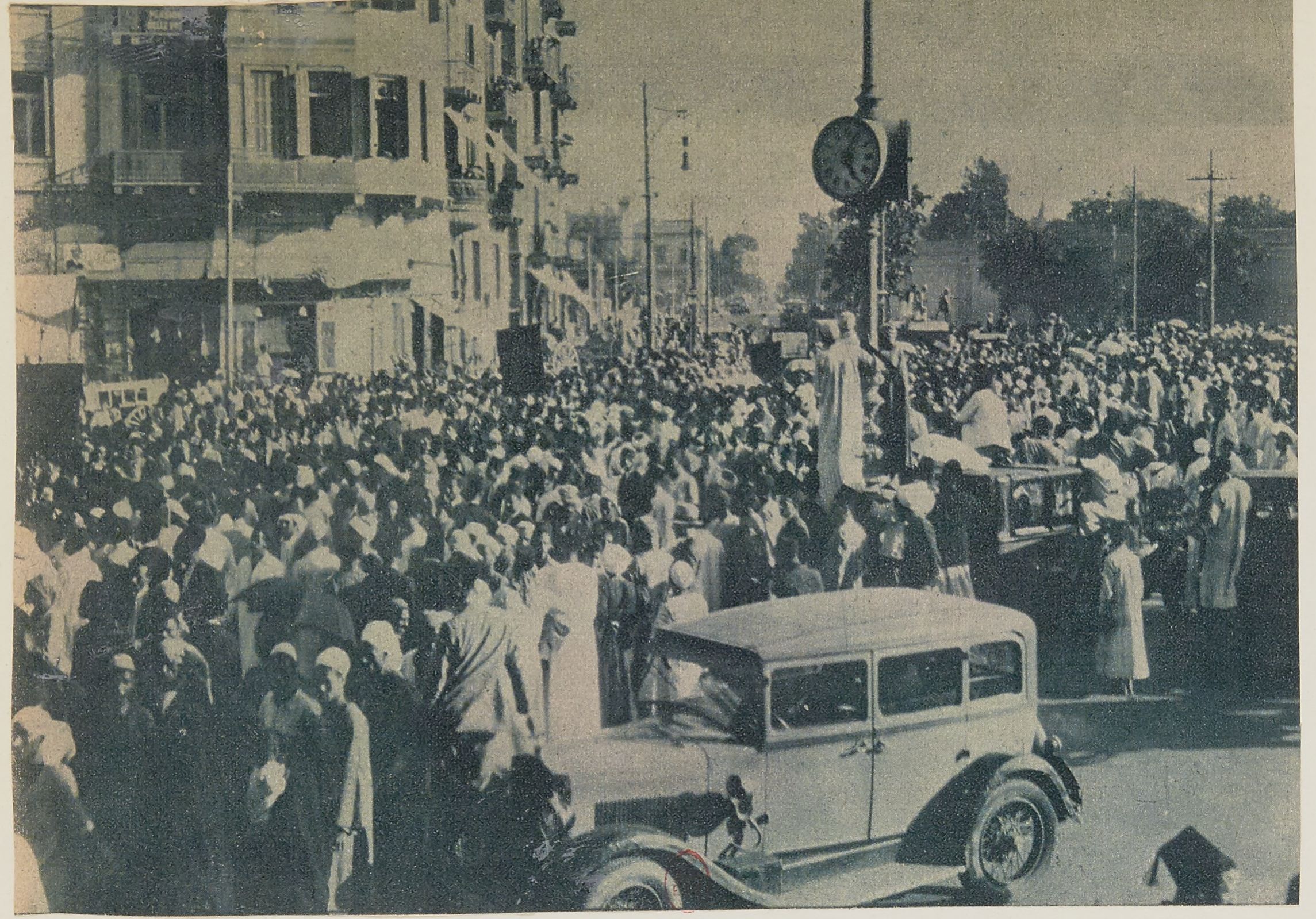In this image, we can see the 1931 funeral of Wissa Wassef (Wiṣā Wāṣif), an important Coptic landowner and politician, and father of Ramses Wissa Wassef, a famous twentieth-century architect and artist. Apart from weddings and circumcision celebrations, funerals are also often public, city-wide occasions – and in Cairo, city of cemeteries, even more than elsewhere. Especially if the deceased belonged to the Egyptian political elite, funeral processions have been important public occasions, often used for mass demonstrations. The two such most famous funerals of Cairo are the singer Umm Kulthum’s procession in 1975 and the president Gamal ‘Abd al-Nasir’s in 1970 but there is a long history of political funeral processions in the city, ranging from Mustafa Kamel to Sa’d Zaghlul. At the everyday level, funeral processions may function as demonstrations of loyalty and respect, in the countryside often important for the survival of the family and protection for inherited wealth and status. Funerals, of course, are also demonstrations of piety, when both Muslim and Coptic religious establishments can present their importance. And finally, these are also occasions for Arabic poetical eulogies, popular in the first half of the twentieth century (Noorani, 1997).
The khedivial elite in the nineteenth century also engineered these occasions to be public representations of loyalty. We have started another post with an image of Khayri Bey’s funeral in 1915. We can date the beginning of khedivial political funerals to the 1880s, the first decade of the British occupation. Before the 1880s, the funeral of the khedives themselves were hurried occasions, for instance, no one attended the funeral of Mehmed Ali Pasha, and similarly Ibrahim, Abbas Hilmi, and Said’s funerals were also rather quick and unceremonious. The first significant political funeral under British rule appears to be Hoşyar’s, the mother of Khedive Ismail, in 1886. Part of the pomp was that she ordered Muslim ceremonies to secure a place for her soul in heaven. Harry Boyle, an English officer freshly arrived in Egypt described the procession in a letter to his mother (letter dated 5 July 1886, MECA):
“First came 12 camels carrying dates and loaves of bread to be distributed to the poor at the mosque as an emblem of her charitable disposition […] 12 buffalos to be sacrificed in the court yard […] a regiment of black soldiers (infantry), then the sheikhs of the various sects, in their robes and turbans carrying great banners of green silk with verses worked on them in red and gold, about 20 of these; then the military bands, then any amount of Egyptian soldiers, cavalry […] then a lot of children singing a dinge, then two long rows of servants in mourning clothes, carrying silver and gold salvers […] then the ulema in their robes; then the Khedive walking with Mokhtar in his right and Wolff in his left followed by his aides and all the Pashas in civil and military dress, then the coffin, about 12 feet long and 6 ft high, carried by relays of 6 pashas; then a lot of mourning women who howled and tore their robes […] lastly the lady’s household, slaves, eunuchs […] then the carriages of the Ministers, Consul General, and big crowd of all nationality headed by Sir E. MacDonald […] finally a great crowd of fellahs.”
In this regard, the last “Ottoman” funeral in Cairo was exiled ex-khedive Abbas Hilmi II’s in 1944, whose coffin arrived in Alexandria by boat first. Among grand ceremony and military salutes it was transported by train to Cairo where a funeral procession brought the coffin to its final resting place. In the pictures of this funeral in 1944, one can observe a peculiar mixture of some Ottoman decorations with British and Egyptian Second World War military ceremonialism.
Click here for the digitized album of the 1944 funeral in the Abbas Hilmi Papers at the Special Collections of Durham University (unfortunately it is not available for download).
Bibliography:
Boyle to his mother, 5 July 1886, Box A, File 2, GB165-0035, Middle East Center Archive, Saint Antony’s College, University of Oxford.
Noorani, Yaseen. “A Nation Born in Mourning: The Neoclassical Funeral Elegy in Egypt.” Journal of Arabic Literature 28, no. 1 (1997): 38–67.
(A.M.)

Comments are closed, but trackbacks and pingbacks are open.